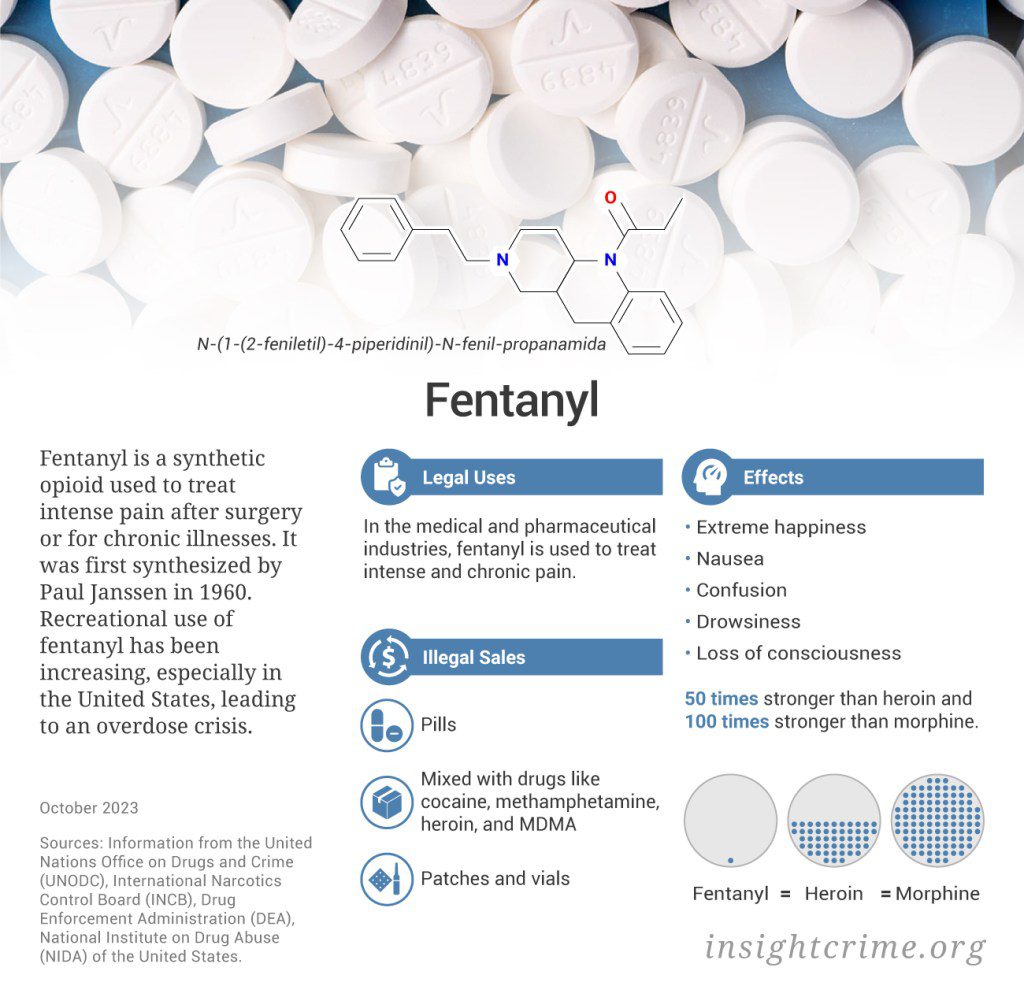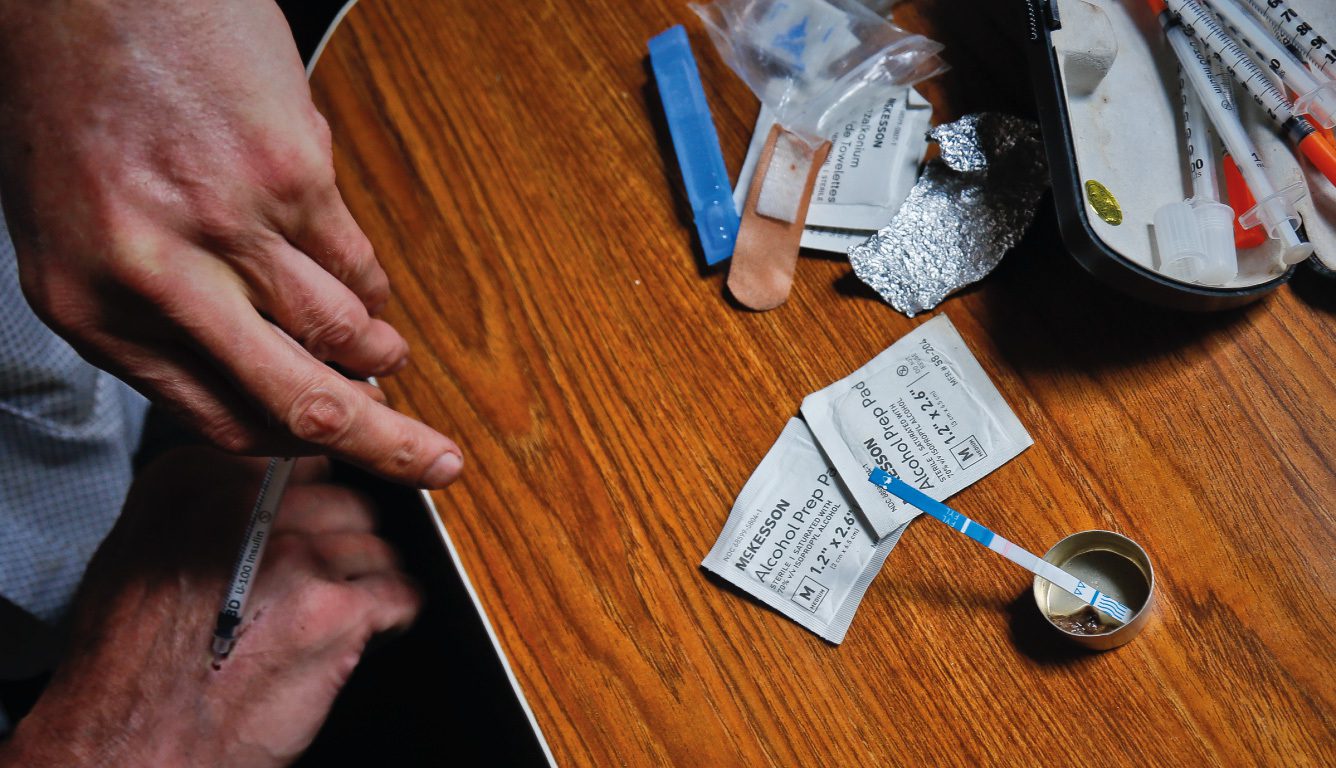Latin American countries have raised alarms about increases in medical fentanyl seizures in recent months. While there is some cause for concern, medical fentanyl is significantly different from the illicit fentanyl that has caused a health crisis in the United States and Mexico.
On October 6, Costa Rica’s Judicial Investigation Bureau (Organismo de Investigación Judicial – OIJ) told news outlet CRHoy that, since 2022, it had seized more than 1,000 doses of fentanyl in the country and had opened 10 judicial inquiries into the illegal distribution of the synthetic opioid.
An attorney from the Bureau Specializing in Organized Crime (Jurisdicción Especializada en Delincuencia Organizada) said that these seizures are evidence of “an exponential increase in the use of fentanyl” in Costa Rica.
“The doors to hell are already open in Costa Rica with fentanyl … the Mexican cartels are looking for subsidiaries in every country to produce this aggressive drug that creates zombies on a global scale,” Costa Rica’s ex-Security Minister Gustavo Mata said in an interview with CRHoy on October 3.
These statements were made in the midst of what appears to be an increase in seizures of medical fentanyl, in varying forms, across the region: in Argentina, Colombia, Panama, Ecuador, Brazil, Honduras, and Venezuela. Authorities are concerned; during the last decade, fentanyl overdoses have caused hundreds of thousands of deaths in the United States and Mexico.
As a result, the recent rise in seizures has sparked a wave of panic. News reports around the region have used phrases like “the arrival of the zombie drug,” “the threat of the killer drug,” or “high alert.” Some coverage has even argued that Mexican criminal organizations are looking to expand the fentanyl market beyond the United States.
Fentanyl is highly addictive and has the potential to generate large earnings for criminal groups from small quantities of the drug. However, the reports of fentanyl seizures in Central and South America are markedly different from the fentanyl produced and sold in Mexico and the United States.
And for now, evidence suggests that these are two distinct criminal economies.
Medical-Use Fentanyl vs. Illicit Fentanyl
The fentanyl that is produced illegally in Mexico and trafficked in the United States is synthesized in rudimentary laboratories by cooks with little to no knowledge of chemistry.
This means that during the production process, the cooks rarely clean the precursor and pre-precursor chemicals, which increases health risks for consumers. Additionally, these producers are careless about controlling the quantity and quality of fentanyl in the final doses. As a result, users do not know how much fentanyl they are consuming, which increases the risk of overdose.
In recent cases in Central and South America, however, the fentanyl seized by authorities was stolen from medical centers or local hospitals that use the synthetic opioid as anesthesia or to treat pain for chronic illnesses.
Unlike the illicit version, medical-use fentanyl is produced in specialized pharmaceutical laboratories with professional equipment and strict quality control. The drug is sold in carefully measured doses to minimize risk for patients.
In March, Panama’s Attorney General Javier Enrique Caballo reported that 19,000 doses of fentanyl had gone missing from the Social Security Fund hospital complex. An investigation into the case found that at least 50 doctors and administrators were stealing the drug.
Officials in the Brazilian state of Espiritu Santo have reported three similar seizures of fentanyl taken from hospitals this year.
In July, Argentine authorities seized 500 vials of fentanyl — one of the most common forms of legally-produced fentanyl — that were being transported by a courier service in the Misiones province. In Colombia, there have also been seizures of vials in the cities of Medellín, Bogotá, Tuluá, and Cúcuta.
The illegal sale of medical fentanyl on the streets is not without risks. In some cases, people with no knowledge of chemistry will alter the opioid, mix it with other drugs, and sell it to unsuspecting users.
In February 2022, for example, 24 people died from consuming cocaine that contained carfentanyl, an analog of fentanyl, in Buenos Aires, Argentina. In Medellín, Colombia hospitals have started to see cases of people who have consumed synthetic drugs like Tusi that were laced with fentanyl.
Different Supply Chains
Illegally-produced fentanyl has a highly organized supply chain that incorporates many different legal and illegal actors.
It all starts in countries with lax regulations, like China or India, where chemical companies produce and sell precursors, pre-precursors, or chemical substances used to produce fentanyl.
These products are bought by intermediaries in Mexico — individuals, importers, or front companies — who transfer the drugs to the production networks, starting with the cooks who synthesize the drug. Various criminal actors, including networks associated with the Sinaloa Cartel and the Jalisco Cartel New Generation (Cartel Jalisco Nueva Generación – CJNG) are involved in the purchase and transport of the drug to the United States.
So far, there is little evidence that this modus operandi has expanded to other countries in Central and South America. Instead, the reported cases have involved small, less organized networks.
In Colombia, for example, the networks siphoning medical fentanyl are novices, using simple strategies, like reporting the use of higher doses or more prescriptions, to cover their tracks. In Cúcuta, on the border with Venezuela, a nursing assistant was caught in August with 98 vials of fentanyl, which he had presumably obtained in the hospital where he worked.


“So far, there are no organized groups or networks [involved in the sale of fentanyl] on our radar,” a government official familiar with the Cúcuta case told InSight Crime. Lacking the authorization to discuss the case, they asked not to be named.
Similarly, Costa Rican prosecutor Chavarría told CRHoy that they have detected small networks of medical professionals who write prescriptions to obtain fentanyl to sell in the illegal market.
There have also been investigations into the siphoning of medical-use fentanyl from public hospitals in Honduras. “It’s the same high-level officials — the doctors — who are siphoning off [fentanyl],” said prosecutor José Corea from the Prosecutor’s Organized Crime division (Fiscalía Especializada Contra el Crimen Organizado).
In Brazil, criminal groups are more sophisticated. Although fentanyl is taken from hospitals, there is evidence of ties to drug-producing networks, since in two of the three seizures the medical fentanyl had been manipulated in clandestine laboratories. While it has not yet been confirmed whether fentanyl is being mixed with other substances there, drugs like cocaine and marijuana have been found in the labs.
Distinct Consumption Patterns
The other factor that distinguishes between the cases in Latin America and the fentanyl crisis in the United States is the regional dynamics of drug consumption.
The current growth of fentanyl consumption in the United States has its origins in the prescription opioid crisis that began in the mid-90s.
At that time, pharmaceutical companies began to push strong, addictive opioids, like Oxycodone, for pain treatment. These medications were widely prescribed, causing users to become addicted to prescription opioids as well as other opioids, like heroin.
Meth, Fentanyl, Ecstasy: Synthetic Drugs Flourish in Latin America
Opioid consumption in Latin America has never been as widespread as in the United States. Without the same large client base, it is unlikely that fentanyl consumption will reach similar heights in the region.
But it is not impossible. A market for synthetic drugs like Tusi, MDMA, and ketamine already exists in the region, which could create future challenges for governments.
*Anastasia Austin contributed to reporting this article.

